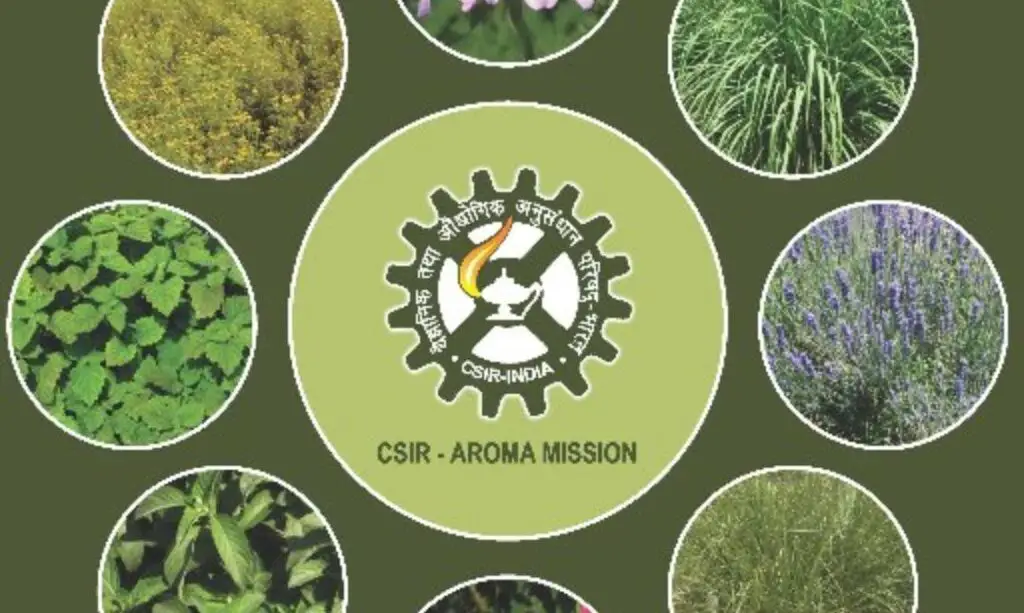Purple Revolution
The Purple Revolution, alternatively referred to as the Lavender Revolution, characterizes the expansion of lavender cultivation in the Indian region of Jammu and Kashmir. This agricultural endeavour is bolstered by the government-led Aroma Mission.

Key Points
- Boosting Domestic Aromatic Crop Economy: Its primary goal is to strengthen the domestic agro-economy based on aromatic crops, thereby reducing the reliance on imported aromatic oils.
- Farmers’ Transition: Approximately 500 farmers from the Doda district have witnessed significant improvements in their livelihoods by transitioning from maize cultivation to the perennial flowering lavender plant.
- Expanding Lavender Cultivation: With the increasing profitability, lavender has gradually replaced maize across more farmlands. The purple blooms now adorn nearly ten times the area compared to a decade ago.
- Lavender Oil Production: Lavender oil is the primary product of this revolution, commanding a substantial market value of at least Rs. 10,000 per liter.
- Lavender Water Utilization: Lavender water, a byproduct of lavender oil extraction, finds its purpose in the production of incense sticks.
Aroma/lavender cultivation has become a popular option in farming for agricultural Start-up in J&K.
In celebration of India’s 75th Independence Day, the Ministry of Science & Technology hosted a special webinar highlighting the Council of Scientific and Industrial Research (CSIR) Aroma Mission.
Jammu & Kashmir has emerged as a trailblazer in the lavender cultivation sector across all 20 districts of the Union Territory, ushering in what is now known as India’s ‘Purple Revolution.’
The CSIR’s Aroma Mission stands as a catalyst for creating fresh avenues of self-employment and entrepreneurship. On the occasion of the inaugural National Start-up Day, Union Minister Dr. Jitendra Singh emphasized that the “Purple Revolution” is Jammu & Kashmir’s contribution to “Start-ups India,” an initiative launched by Prime Minister Narendra Modi in 2016.
CSIR Aroma Mission: Transforming lives through S&T

The CSIR Aroma Mission, initiated in 2016, has a visionary aim of revolutionizing the aroma sector through strategic interventions.
- The mission focuses on advancing aromatic crop varieties and their associated agro-technologies. It evaluates their suitability for widespread cultivation in specific agro-climatic regions.
- This mission advocates for the cultivation of aromatic crops essential for the aroma industry, meeting the soaring demand for essential oils.
- It empowers Indian farmers and the aroma industry to establish themselves as global leaders in producing and exporting essential oils, following the successful model of menthol mint cultivation.
The Aroma Mission, affectionately known as the “Lavender or Purple Revolution,” commenced in Jammu & Kashmir and has positively transformed the livelihoods of farmers. They have embraced lavender cultivation, reaping substantial profits, and elevating their living standards.
Launched under the aegis of the Union Ministry of Science & Technology in collaboration with the Council of Scientific & Industrial Research (CSIR), this initiative commenced with the introduction of high-value lavender crops producing essential oils. Initially, it was implemented in districts like Doda, Kishtwar, and Rajouri, eventually expanding to encompass regions such as Ramban and Pulwama.
Objectives
The CSIR Aroma Mission encompasses a wide array of objectives and initiatives, all aimed at fostering the cultivation and utilization of aromatic crops, particularly those in high demand within the aroma industry. Here’s a breakdown of its key components:
- Crop Development: Focuses on the advancement of superior crop varieties and their corresponding agro-technologies. It involves assessing their compatibility with specific agro-climatic regions.
- Cultivation Promotion: Encourages increased cultivation and processing of aromatic crops, with an emphasis on expanding the cultivation area.
- Value Addition: Aims to enhance the value of aromatic crops through various methods and techniques.
- Skill Development: Engages in skill development activities to equip individuals with the knowledge and expertise required for successful cultivation and processing.
- Intellectual Property: Involves the generation, valuation, and management of intellectual property related to aromatic crops.
- Entrepreneurship Development: Supports the growth of entrepreneurship within the aroma sector, encouraging innovation and business development.
The overarching goals of the Aroma Mission are as follows:
- Promoting Aromatic Crop Cultivation: The mission seeks to boost the cultivation of aromatic crops, especially those in high demand in the aroma industry.
- Global Leadership: It aspires to position Indian farmers and the aroma industry as global leaders in the production and export of essential oils, akin to the success of menthol mint cultivation.
- Farmer Benefits: By achieving higher profits, utilizing previously unused lands, and safeguarding crops from wildlife and grazing animals, the mission aims to deliver significant benefits to farmers.
In essence, the CSIR Aroma Mission is a comprehensive endeavor aimed at uplifting the aromatic crop sector, benefiting both farmers and the aroma industry alike.
Nodal Agencies
The nodal laboratory is CSIR-Central Institute of Medicinal and Aromatic Plants (CSIR-CIMAP), Lucknow.
The participating laboratories are CSIR-Institute of Himalayan Bioresource Technology (CSIR-IHBT), Palampur; CSIR-Indian Institute of Integrative Medicine (CSIR-IIIM), Jammu etc.
Coverage
The extensive coverage of the mission project has yielded substantial advantages:
- Wide Geographic Impact: Scientific interventions carried out under the mission have delivered reliable benefits to farmers across diverse regions. These areas include Vidarbha, Bundelkhand, Gujarat, Marathwada, Rajasthan, Andhra Pradesh, Odisha, and several other states. These regions often grapple with unpredictable weather extremes and the associated agricultural challenges.
- Diverse Aromatic Plants: The aromatic plant portfolio encompasses a variety of species, such as lavender, damask rose, mushk bala, among others. These plants contribute significantly to the mission’s success and the well-being of farmers.
The achievements of the Aroma Mission are noteworthy:
- Rural Employment: The mission has been instrumental in creating job opportunities in rural areas, benefiting farmers and promoting entrepreneurship in the production of aromatic oils and related products. This initiative has also contributed to reducing the reliance on imported essential and aromatic oils.
- Extensive Cultivation: Through CSIR’s Aroma Mission, significant progress has been made in the cultivation of crucial medicinal and aromatic plants, covering approximately 6,000 hectares of agricultural land.
- Substantial Employment: The mission’s efforts have resulted in the generation of 10 to 12 lakh man-days of rural employment, offering livelihood opportunities to a substantial workforce. Moreover, it has facilitated the production of over 500 tonnes of essential oils valued at Rs. 60 crores over the past two years.
Launch of the Second Phase
- Phase II Initiation: CSIR-IIIM-Jammu introduced the Aroma Mission Phase-II in February 2021, building on the achievements of its predecessor.
- Comprehensive Objectives: This phase places a strong emphasis on several key objectives, including the establishment of cooperatives for marketing, the promotion of cultivation and processing of high-value medicinal and aromatic plants (MAPs), development of superior plant varieties and their associated agro technologies, installation of distillation units and processing facilities, fostering skill development and entrepreneurship, as well as enhancing value addition and product diversification from MAPs.
- Alignment with National Goals: The mission aligns with the government’s policy to double farm incomes by 2022, contributing to broader agricultural and economic objectives. Additionally, it has created employment opportunities for women farmers, furthering the cause of inclusive growth.
M.C.Q.
Q. Purple Revolution:
1)The “Purple Revolution” in India is a result of the Aroma Mission launched by the Union Ministry of Science & Technology
2) ‘Purple Revolution’ involves cultivation of Lavender as a new aroma crop in the Kashmir Himalayas. CORRECT?
Options :
A) 1 only
B) 2 only
C) Both 1 & 2
D) Neither 1 & 2Answer: C
Q. Purple revolution:
1.It aims to support aromatic crop based agro economy under the Aroma mission launched by the Ministry of Environment.
2.The main ingredient of the purple revolution is the lavender correct?
Options :
A) 1 only
B) 2 only
C) Both 1 & 2
D) Neither 1 & 2Answer: B

